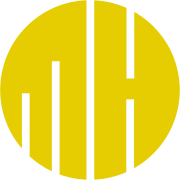BonusParts A to Z: Character
I took a poll a few weeks ago about what this “C” post should be about. Since I didn’t give the option of Cookie, Character won out. (The other available options – Cursive and Color – I’ll touch on in other posts, since there were a few folks who showed interest in those.) But for now….
C is for Character
There are already a lot of books and articles out there focused on how to write great Characters, and it’s not my place to tell anyone else how to write their characters. Instead, I’ll tell you about how I write mine.
Beginning Concepts
Every one of my stories starts with a main character, and the main character’s conflict. This initial conflict can be very simple, like a young woman finding out she’s falling in love with her teenage rival, or quite complicated, such as a special forces bodyguard trying to help his assignment-turned-friend escape the government conspiracy rising up around them. From that conflict, a personality starts to emerge. Oftentimes, it takes the shape of a voice, a face, and a manner.
My characters have very distinct voices in my head. Some voices come in accents, such as Seven’s clipped Ukrainian enunciation. That character’s particularly precise way of speaking, without contractions, created a picture of a big man with a straight posture who walks and moves with an efficiency of effort. That became his manner and his form. The third basic part of Seven’s creation was his face. He had to be a good-looking man but also scarred by his past. I made that scar physical and on full display on his face, in contrast to its secrecy.
With those three basic building blocks in place, Seven was free to grow as I experimented with dialogue, situations, and relationships.
Telling Their Own Story
No character exists in a vacuum. Story beats and other characters, both major and minor, have an effect on them. As my characters’ voices become clearer and more distinct from each other in my head and on paper, they start to become more fully-realized people. And, I do think of most of my characters as people. They have lives before I pick them up, and they have lives that continue after I let them go. (The ones I don’t kill do, anyway.)
I’m a firm believer in letting characters run as free as they can. Of course, a story has to follow a plot, and a writer can’t let a plot get away from them. But there have definitely been times when a character’s voice has been so powerful that I’ve had to change the story to suit them. For example, in my Persona 4 story 1 More Chance!, Yukiko was originally going to marry Kou, as laid out at the start of the story. But as I began to write more of Yukiko, her own voice usurped my previously-laid plans, and she revolted against those plans. That led to a completely unexpected fourth arc of the story that I personally think works better than my original outline.
What Did We Learn?
My characters rarely start out as traditional archetypes. They may become that – or come closer to that – over their time in my stories, but I prefer to create not from a distinctive mold but from an amorphous and changeable possibility. To me, that’s what makes these characters people.
But what about you? How do you create your characters? Let me know in the comments or on social media!


Recent Comments
The Real Person!
Author Mayumi-H acts as a real person and passed all tests against spambots. Anti-Spam by CleanTalk.
The Real Person!
Author Mayumi-H acts as a real person and passed all tests against spambots. Anti-Spam by CleanTalk.